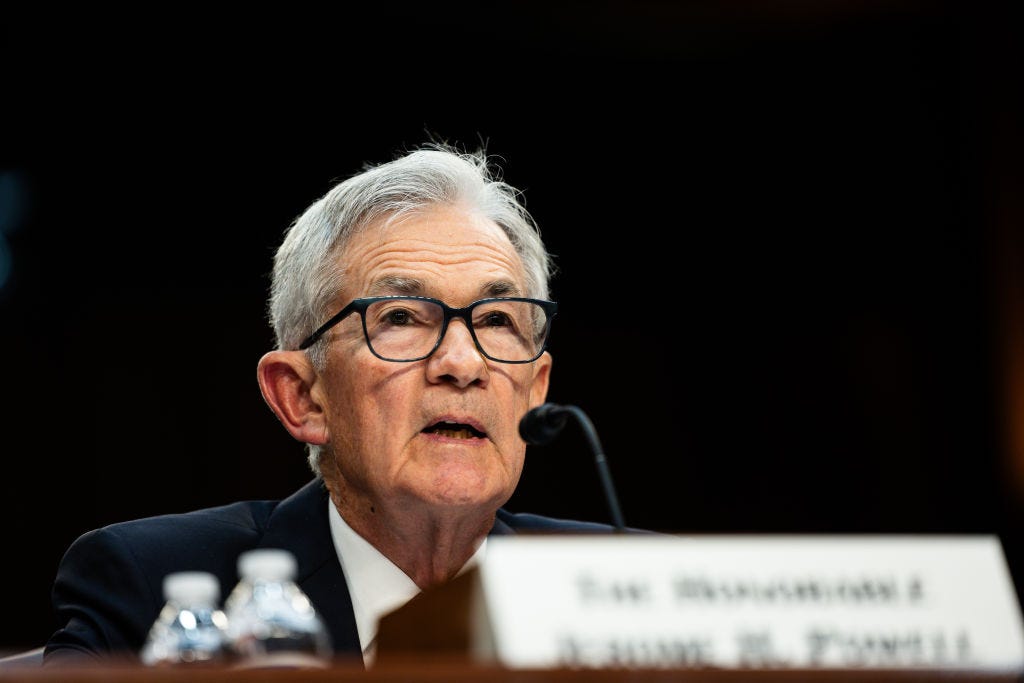Bloomberg/Contributor/Getty Images
Key takeaways
- The US economy has made “considerable progress” toward the Fed’s 2% inflation goal over the past two years, Chair Jerome Powell said during congressional testimony today.
- Besides cooling inflation, a softening labor market could potentially affect the Fed’s decision to cut interest rates.
- The latest Consumer Price Index inflation data is set to be released on Thursday, but it’s unlikely to affect how the Fed votes on interest rates during its meeting at the end of the month.
Slowing inflation combined with the labor market’s “considerable cooling” is strengthening the case for interest rate cuts, US Federal Reserve Chair Jerome Powell said today in congressional testimony.
“This is no longer an overheated economy,” Powell told the Senate Banking Committee as part of his semiannual address to Congress on monetary policy.
After ticking back up in the first quarter of 2024, we’ve seen “modest” progress in slowing inflation, Powell noted. US consumer prices were unchanged month over month in May, according to Consumer Price Index data released by the Bureau of Labor Statistics. Annual inflation increased by 3.3%, slightly down from April’s 3.4% annual increase.
Although inflation overall has “eased notably over the past couple of years,” according to Powell, it remains above the Fed’s 2% target.
Powell’s comments come on the heels of last week’s job numbers from the Bureau of Labor Statistics. Although still low, unemployment inched up again slightly in June to 4.1%. The gradual softening of the labor market has led some — including the stock market — to anticipate that the Fed could finally cut interest rates as soon as September.
The committee needs to see a sustained improvement in inflation numbers over the next few months before it makes any adjustments to the federal funds rate, according to Powell. That means even if Thursday’s CPI report shows inflation cooling again, it won’t likely alter the Federal Open Market Committee’s vote later this month. The Fed is expected to once again hold interest rates at a target rate of 5.25% to 5.5%, the level they’ve been at since July 2023.
Here’s why everyone is trying to interpret Powell’s tea leaves, and what it means for your money.
How could interest rate cuts affect you?
The federal funds rate is the interest rate banks charge each other for borrowing and lending. When this rate goes up, banks tend to also raise rates on consumer products like credit cards and loans, making it more costly to borrow money. The Fed raised interest rates throughout 2022 and 2023 to put the brakes on runaway inflation, which spiked in the wake of the pandemic.
Even if the Fed votes to cut the federal funds rate in September, it would likely be incremental. One interest rate cut alone is unlikely to lower your credit card APR much. So if you have high-interest debt, consider implementing a debt payoff strategy or applying for a balance transfer card or debt consolidation loan.
If you’re waiting for rates to fall to buy a home, experts suggest focusing on the factors you can control, instead. And while it isn’t a buyer’s market in most areas of the country, slowing home sales could offer an opportunity to negotiate with a motivated seller for a lower price.
Lastly, if you’re working on saving more money, take advantage of higher interest rates with a high-yield savings account or high-yield certificate of deposit, to grow your savings faster.



